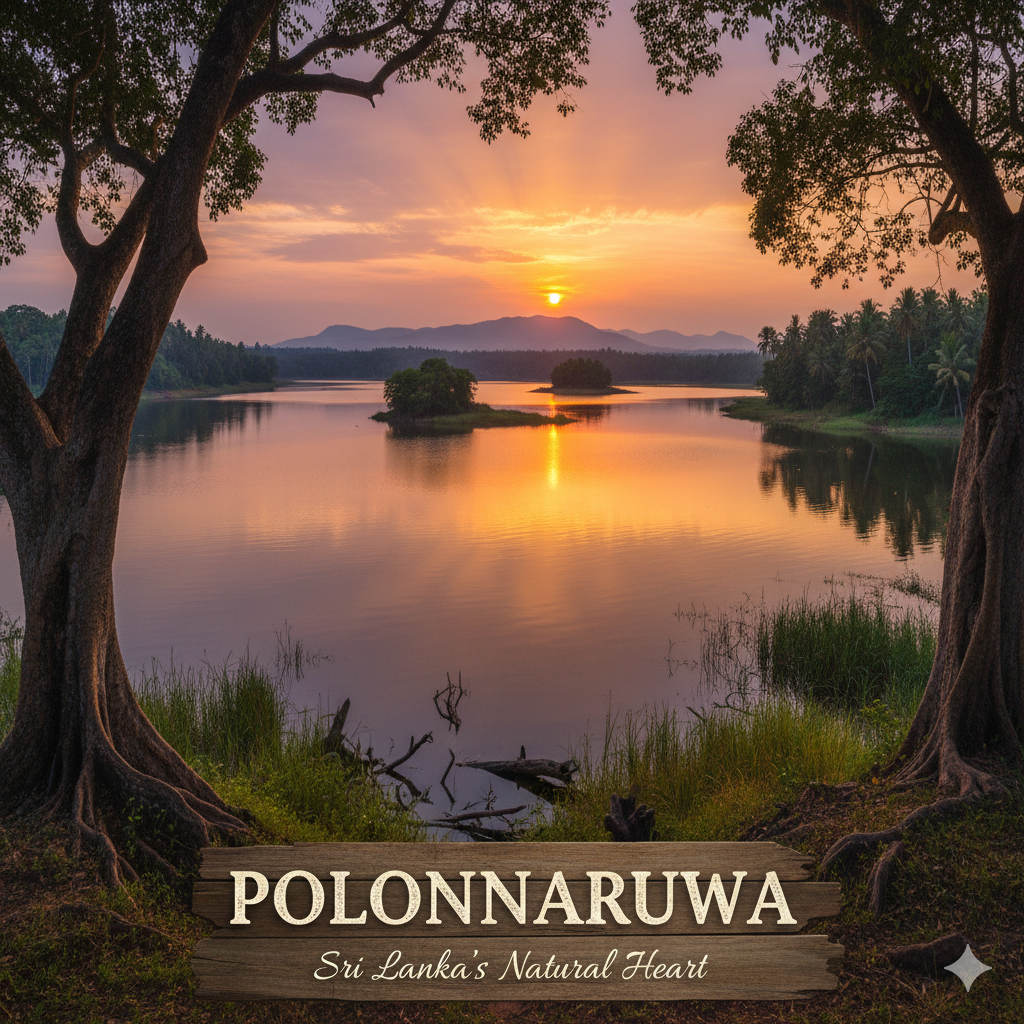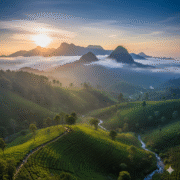
Polonnaruva – The Medieval Capital of Sri Lanka
- November 13, 2025
- eunoialankatours
- 6:22 pm
Polonnaruva is a city in Sri Lanka’s North-Central Province where history whispers through ruins and stone tells stories of kings, monks, and master builders. Polonnaruva was Sri Lanka’s capital from the 11th to the 13th centuries AD, after Anuradhapura fell out of favour. It is now a UNESCO World Heritage Site. Today, it is one of the island’s most interesting archaeological sites, taking visitors back to a time of amazing irrigation systems, beautiful Buddhist art, and cultural exchanges.
From Outpost to Empire
Polonnaruva was a strategic military outpost (kandavuru-nuvara) long before it became a capital. Guarding the crossings of the mighty Mahaweli River, it served as a buffer against invasions from South India. The South Indian Chola dynasty took over Anuradhapura in the 10th century and moved their power base to Polonnaruva. They changed the name to “Jananatha Mangalam” and built Hindu shrines that still stand next to Buddhist monuments today. This is a clear sign of the city’s multicultural past.
King Vijayabahu I (1055–1110) beat the Cholas and brought back Sinhalese rule. But it was King Parakramabahu I (1153–1186) who turned the city into a huge, beautiful city. His famous order still echoes his vision:
“Let not even a drop of rainwater flow into the sea without being made useful to man.”
The Glory of Parakramabahu the Great
During King Parakramabahu’s reign, irrigation, architecture, and Buddhist culture reached their peak. The Parakrama Samudra, or “Sea of Parakrama,” is his greatest work. It is a huge man-made reservoir that covers more than 2,500 hectares and can hold 134 million cubic meters of water. It still feeds nearby villages today, which shows how smart the engineers were in ancient Sri Lanka.
Polonnaruva became known as the “Granary of the East” thanks to his support. He also built huge monasteries like the Alahana Parivena, impressive image houses like Lankatilaka and Tivanka Patimaghara, and the famous Gal Vihara rock-cut Buddhas.
Artistic and Spiritual Legacy
Polonnaruva’s sculptures represent a unique Sri Lankan style shaped by Buddhism yet influenced by Indian and even Greco-Roman traditions.
- Gal Vihara: Four colossal rock-hewn statues – a seated Buddha, a standing figure, a reclining Buddha (46 feet long), and a smaller seated image in an artificial cave. These serene figures reflect compassion, meditative calm, and the profound artistry of the 12th century.
- Vatadage: A circular relic house with exquisitely carved moonstones and balustrades, showcasing Sri Lanka’s peak in circular stupa design.
- Lankatilaka Image House: Once coated in gold, this towering brick sanctuary holds a gigantic standing Buddha.
- Rankoth Vehera & Kiri Vehera: Majestic stupas that continue the island’s tradition of sacred architecture.
Unlike the idealised Greek sculptures or the realistic Roman portraits, Sri Lankan art of Polonnaruva emphasised spiritual depth over physical perfection – each statue radiating stillness, compassion, and timeless Buddhist values.
City Planning & Daily Life
The city layout of Polonnaruva shows that mediaeval cities were built in a very advanced way. The city was more than 122 hectares big and was split into two parts: an inner citadel with royal palaces and council chambers, and an outer city with monasteries, shrines, parks, and markets. The streets were laid out in a grid, and royal parks like Nandana Uyana provided shade.
Archaeologists found a monastic hospital complex with stone surgical tools, which shows that Polonnaruva was not only a centre of religion and politics in the Middle Ages, but also of science and medicine.
Echoes of Hindu Shrines
Hindu temples (Siva Devales) from the time of the Chola occupation are scattered among the Buddhist ruins. These shrines are made of stone and honour gods like Shiva, Vishnu, and Parvati. They show how Polonnaruva was a diverse community where Hindu and Buddhist traditions lived together. This is a rare and powerful reminder of how different cultures can be.
Why Visit Polonnaruva Today?
It feels like going back in time when you walk through Polonnaruva. Every moonstone, pillar, and statue shows a different part of history, from Indian influences to Sri Lankan ways of showing faith and power. Visitors are not only looking at ruins; they are also seeing a living legacy. Farmers still use the waters of Parakrama Samudra, and Buddhist pilgrims still bring flowers to the old stupas.
For travellers with Eunoia Lanka Tours, Polonnaruva offers:
- UNESCO-listed ruins combined with immersive storytelling.
- A chance to witness both Buddhist and Hindu heritage.
- Scenic cycling tours around reservoirs and ancient city walls.
- A journey into the soul of medieval Sri Lanka – where spirituality, artistry, and ingenuity meet.
Conclusion
Polonnaruva is more than just an archaeological site; it is a symbol of strength, creativity, and dedication. The city shows how Sri Lanka can change, grow, and inspire. From the peaceful faces of Gal Vihara to the engineering marvel of Parakrama Samudra, it does all of these things.
At Eunoia Lanka Tours, we invite you to experience the wonder of diversification and feel like a local as you explore Polonnaruva – where every stone tells a story, and every ruin keeps the heartbeat of a lost capital alive.


